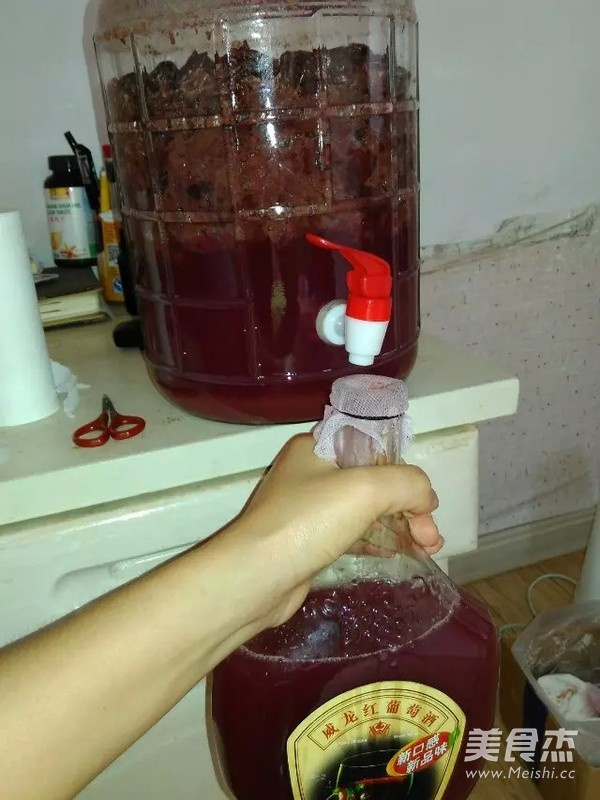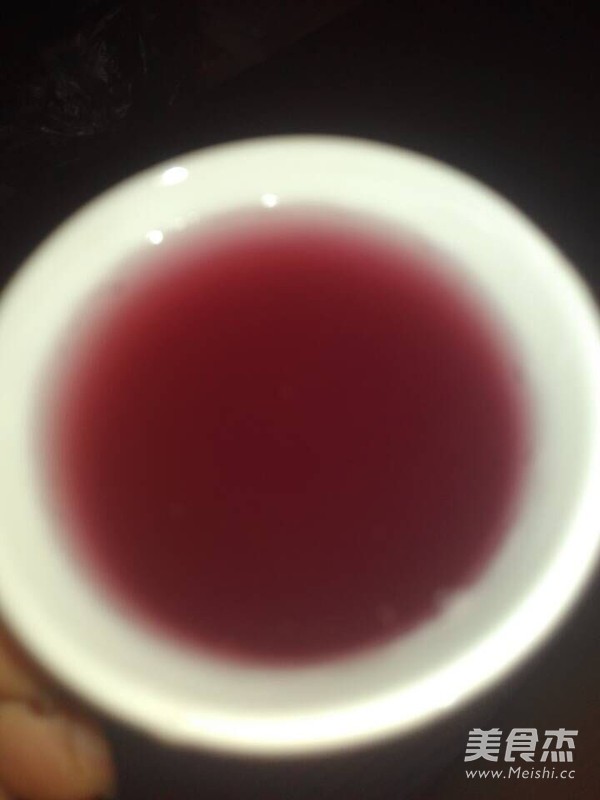Homemade Wine
1.
Cut the grapes one by one with scissors into the picture. Do not break the skin, or it will not break at all, or it will affect the quality, and then put the dust on the surface in the water. Do not scrub by hand, let alone use it. Brush, and do not sterilize the grapes. The white film on the surface is fermented. It is necessary to ensure the survival of wild yeast.
2.
After the grapes are washed, they should be fully dried in a basket or hung up to dry.
3.
First fermentation: The method of crushing is very simple, that is, crush the grapes, just separate the skin and the flesh, and pack them together with the skin and seeds, and put them in two-thirds of the container (the remaining space is left for fermentation) (The space where the grape skins rise at the time)
4.
Adding sugar is usually added in several times. For the first time, add half of the grapes 24 hours after the grapes are loaded, and add the remaining part 3-4 days later depending on the fermentation situation. After the grapes are bottled, cover the bottle (don't cover it tightly, leave an air vent, as long as there is no dust in it)
5.
After a week or so, the fermentation residue is separated from the wine liquor. After the sugar is consumed, the fermentation stops naturally, and the peel no longer rises, that is, the fermentation stop point is reached. However, if too much sugar is added and the fermentation stop point is not reached after 7 days, the yeast is still multiplying and fermenting, and the wine is still bubbling with carbon dioxide. If it is sealed immediately, the pressure in the bottle will increase during post-fermentation, which may cause problems. Open the cork and squirt out the wine. So wait until the wine no longer has a lot of bubbles before sealing.


6.
The second fermentation will produce a small amount of fine foam, which is basically completed after 2 to 3 weeks. The wine is particularly clear. The second fermentation is not based on yeast fermentation, but malolactic fermentation, so it will not produce a lot of carbon dioxide. The pressure will not continue to increase, and there is no danger of bottle explosion. So fill the container as much as possible and tighten the cap
7.
The picture on the left shows the way it was poured into a ceramic cup after one and a half months after fermentation.


Tips:
Precautions for self-brewed wine:
1. All kinds of containers must be cleaned, and the grapes must not be exposed to oil, iron, copper, tin, etc., including stainless steel products during the brewing process.
2. During fermentation, the lid of the fermentation container must be tightly closed, but must not be tightly closed to prevent explosion.
3. Don't put too much sugar, it will affect the fermentation process and produce undesirable ingredients. If you want to drink sweet wine, you can add sugar when drinking after the fermentation is complete.
4. Choose a container reasonably. During the grape brewing process, it should not be in excessive contact with the air, as it will easily oxidize the grape juice and produce harmful substances. It is best to use non-metallic utensils, such as glass bottles and glass jars.
5. The amount of drinking should be controlled at about 50ml, and the best drinking time is 30 minutes before going to bed.
6. It is recommended that the self-brewed wine should be shared with relatives and friends within 1-2 years. After all, it is not a professional winemaking. Due to various factors, if the storage time is too long, it will easily lead to deterioration of the wine. Of course, it cannot be ruled out. Make a good wine that can withstand aging.